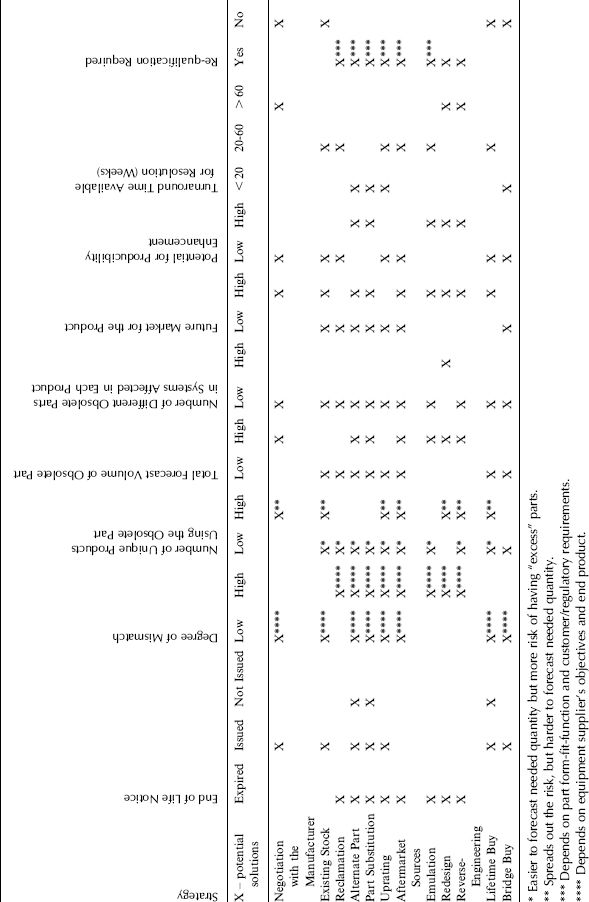7.3 SELECTING THE PROPER REACTIVE OBSOLESCENCE MANAGEMENT STRATEGY
The major factors for consideration in choosing a strategy for solving an obsolescence problem are discussed in the following subsections.
7.3.1 Part Discontinuance Status
The issuance time line of a product discontinuance notice is illustrated in Figure 7-2. Prior to the issuance of the PDN, the equipment supplier may be unaware of the impending event unless some forecasting tool is employed. Once the PDN has been issued, the estimation process for the various options is triggered. Until the last order date, the equipment manufacturer has time to decide upon a response. Depending on the part supplier, this delay may be from six months to one year. During this period, the equipment manufacturer has a whole range of solutions available, as shown later in Table 7-3. After the last order date has passed, the options begin to shrink, until the only options available after the last ship date has passed are the most expensive ones.
TABLE 7-3 Checklist for Choice of Obsolescence Strategy

7.3.2 Degree of Life Cycle Mismatch
The degree of life cycle mismatch represents the ratio of the useful service life of a product to the expected life of the parts used. For an avionics product this ratio may be five to ten, meaning that the useful service life of these products is five to ten times longer than the expected life of the ...
Get Strategies to the Prediction, Mitigation and Management of Product Obsolescence now with the O’Reilly learning platform.
O’Reilly members experience books, live events, courses curated by job role, and more from O’Reilly and nearly 200 top publishers.

